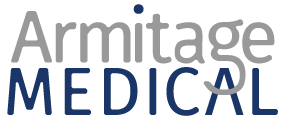Something that commonly comes up in my consultations with physicians who want to enter the world of medical writing is a resume. It’s a necessary piece of the nonclinical puzzle. When looking for freelance or employed work, you will need a concise and compelling resume.
In my experience, most clinicians only have a curriculum vitae (CV), especially if they’ve never ventured out of the clinical arena. There’s absolutely nothing wrong with that. But if you’re thinking about getting into medical writing (or another nonclinical path), converting your CV into a resume should be on your to-do list.
Contrary to popular belief, a CV and a resume are not the same thing. Let’s review the three main differences between the two.
Length
A resume is a concise representation of your experience and qualifications. In most cases it should not be longer than 2 pages. That said, I have worked with some physicians who simply have so much relevant experience and training that it extends to 3 pages.
A CV is much longer than a resume, and it tends to get longer with each academic post, publication, and award. I’ve seen CVs around 20 pages. Can you imagine being a hiring manager who had to look through 20+ pages for multiple candidates? My eyes feel heavy just thinking about it.
Purpose
The purpose of a resume is to demonstrate why you are qualified for a particular position. It is not meant to give an overview of your entire career. This is why a resume is important for nonclinical positions. It also means you will probably need to make changes to your resume for different applications.
A CV is commonly used in academia, clinical practice, and research. It serves as an overview of the timeline of your professional activities and experience. With every publication, presentation, award, grant, and employed position in your career, it can help establish you as an expert in a particular area.
Format
A resume starts with a summary that describes who you are, what you’ve accomplished, and why that makes you the right person for the job. It’s followed by your work experience in reverse chronological order, followed by education and training. After that you want to list your written work. Finally, include licensure, certification, and any relevant* awards, skills, or professional activities.
*You probably noticed the word relevant. This is because a resume should be tailored to the position for which you’re applying. For example, if you are interested in a job in leadership, you might put less emphasis on writing experience than details about professional development and committee work.
The format of a CV is also structured but not concise. It’s a complete overview of your career and includes every detail; a comprehensive listing of every clinical position you’ve held, as well as certifications, publications, presentations, awards, honors, and so on. These details are incredibly important when hiring teaching staff. But outside of academics, a CV isn’t quite as useful.
So there you have it! Now that you understand the differences, you can get to work on creating a new resume. Even if you’re only thinking about medical writing (or other nonclinical work) at this point, it’s never too early to get your resume ready. Then, you can add any new experiences or skills as you acquire them.
If you don’t have the time to convert your CV into a resume, please contact me. I’m happy to help you with this!
